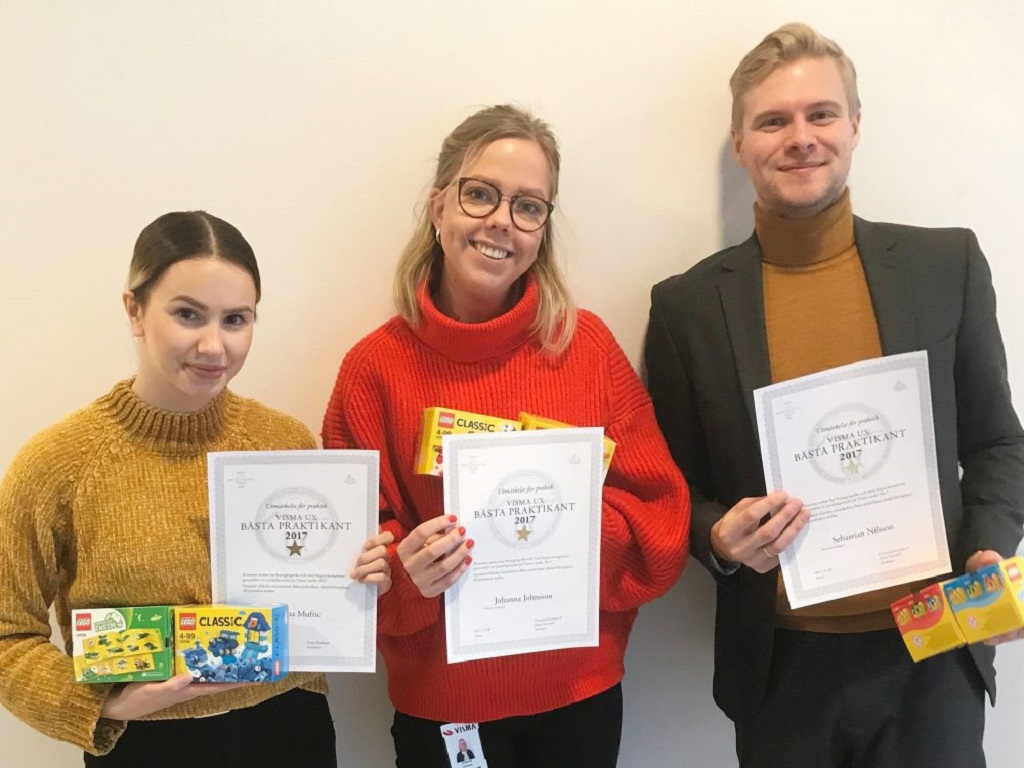Some of you might have met us in real life as we have had our desks in the Malmö office, but for the rest of you: we are Johanna and Sebastian! We come from Malmö University where we are currently studying our third and final year of the Interaction Design program.
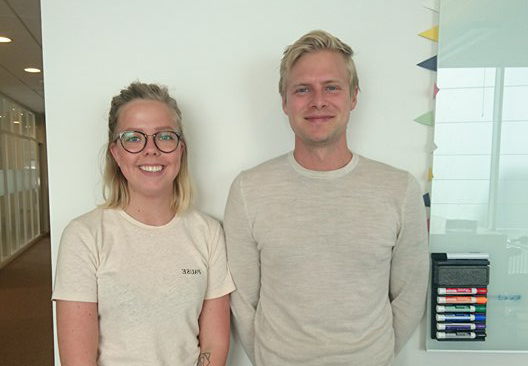
Johanna and Sebastian on their first day (nervous and in matching outfits).
During the fifth semester of the program we have the opportunity to do an internship in a company of our choice, and we decided to spend the semester at Visma. Or, we suggested that we could spend it in Visma and they said yes!
We knew that we had a lot to live up to after hearing about the previous intern, so it was with a bit of nervousness that we stepped through the doors an early morning (around 10 actually, but that is early for students…) in late August.
But we quickly got comfortable and a few days (!) later we went out on our first meetings and user interviews.
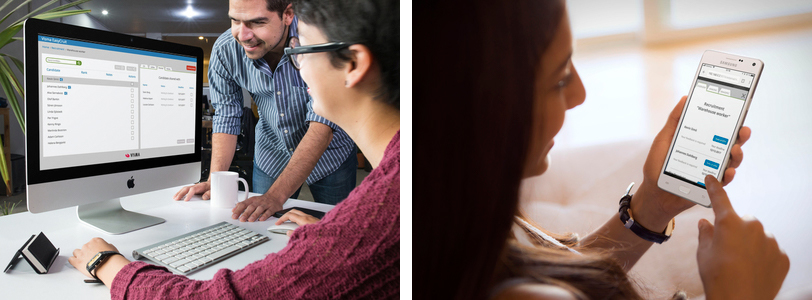
Apart from playing with Lego, stealing milk and making this incredible video, we got the opportunity to work on two challenging projects; Sesam2 and EasyCruit.
I (Johanna) worked on Sesam2, which is a complex, web-based product, primarily used by the health sector to keep track of medical aids that are going in and out of warehouses. The product is used by service technicians (among others) who fix the aids if they break, need new parts or just needs to be reconditioned.
This is where my project took off. My task was to give a design proposal for a mobile application for the part of Sesam2 that is used by the service technicians.
To learn about their needs, my work included visiting a lot of warehouses and of course, talking to a lot of technicians. By doing this I got to learn about a whole new domain, and see thousands of wheelchairs (literally) together with my supervisor Christina Freyhult.
An example scenario could be that someone breaks their leg and finds themselves in the need of a wheelchair. The hospital then orders a wheelchair from one of the warehouses in accordance to that person’s specifications.
The technician then needs to gather material and log their work, something which is currently done manually on a computer. The app that I designed is meant to help the technician in their work of registering the parts that they take by scanning barcodes instead of having to write down the long ID numbers for each part.
The technicians also have the information they need about the task in their hand, instead of having to return to the computer each time.
I have learned so much during this project, not just about the new domain but also about how the UX process works in a big company!
Enabling feedback in recruitment processes (Sebastian)
I have worked on the program EasyCruit which is one of Visma’s recruitment systems. My project was focused on collaborative recruitment and exploring mobile workflows. There is a feature called panel review in the system today, which is meant to facilitate collaboration in recruitment processes, but no one uses it. My design process started with the question; Why?
I had quite a long research phase with many interviews which helped me map out the recruitment process. I synthesized my research by making a design brief which included personas, scenarios, objective, and design principles. In the beginning, recruitment sounded like quite a dull domain but it surprised me and I really became immersed in the world of recruitment, and it made me determined to understand the users and their needs. I also got a lot of inspiration and support from my supervisor Johan Strandell. He helped me frame my project, which at first seemed overwhelmingly wide.
I was lucky to find very kind and supportive users of EasyCruit, which made it possible for me to continuously have interviews and user tests throughout the project. Being able to have contact with several users who worked in different domains, had different roles and needs, gave me insights into most areas of this very diverse domain.
By synthesizing my research and mapping out the process, the users, their needs, and their motivations to use the feature panel review, I could start designing and conduct user tests. I used the tool Balsamiq for lo-fi prototyping, which was a new method for me.
The ability to quickly iterate and create several version of the design really made me like working with it in the early phase of my prototyping. After iterating and doing user testing, I started making a hi-fi design prototype in a program called noodl.
This choice was mainly based on the tool being able to create multi-screen prototypes which I felt was important in a project focusing on collaboration between two users. This prototype was also my final design proposal.
Overall I have learned a lot, such as conducting interviews with real customers by myself, developing my prototyping skills, creating a design brief and presenting and arguing for my work. I think that this is the benefit of doing an internship at Visma.
You get to be there in every step of the design process, and even though you have help from your supervisors, you have to go through them yourself. In school you might be able to slide through some parts of the education but here you have to reach out, take action, take responsibility, and deliver.
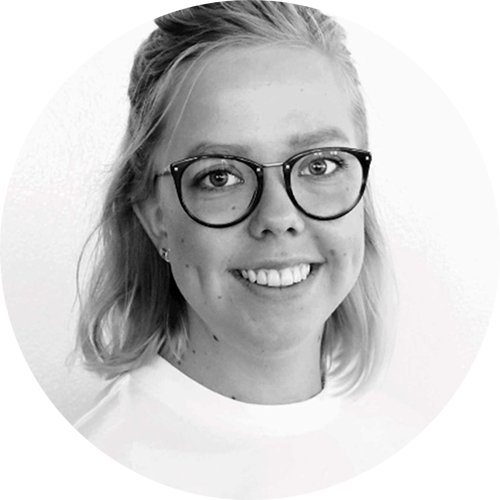
Johanna Johnson, Malmö University
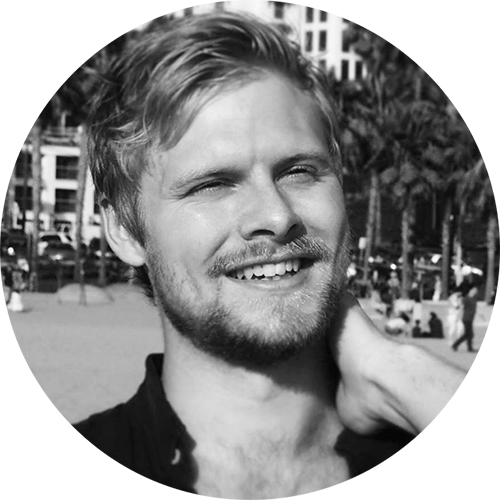
Sebastian Nilsson, Malmö University

